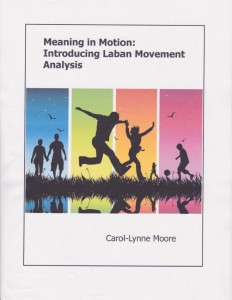 “Meaning in Motion is one of the few, if not the only, contemporary texts to integrate historical, theoretical, and creative frameworks for understanding and studying Laban Movement Analysis,” writes Dr. Andrea Harris, University of Wisconsin, Madison.
“Meaning in Motion is one of the few, if not the only, contemporary texts to integrate historical, theoretical, and creative frameworks for understanding and studying Laban Movement Analysis,” writes Dr. Andrea Harris, University of Wisconsin, Madison.
Dr. Harris has been using the text for several years now. Her comment highlights key features of the book. For example, Part 1 – History and Development of Laban Movement Analysis – discusses Laban’s career, the contributions of Irmgard Bartenieff and many others who have added to the Laban legacy.
Theory is covered with sections on Body, Effort, Space, Shape, and Movement Harmony. Each of these sections incorporate Creative Explorations for use in the studio during class time or for individual study.
The book is richly illustrated with photographs, charts, and effort and space phrases. Five different appendices provide additional material for study. These include bibliographies of various works by Laban, Bartenieff, and other major applications of Laban theory, along with more advanced space and effort sequences, and a section on relationship. As Harris notes, “ I like that the polar triangles, girdles, axis, A and B scales are in the appendix, in case an instructor would want to incorporate them.”
She adds, “I have always wished for more information about Relationship (Appendix E). I appreciate that you’ve fleshed out how the various Laban communities conceptualize relationship.”
In the next blog, learn how Dr. Nancy Beardall uses Meaning in Motion in two programs at Lesley University.
